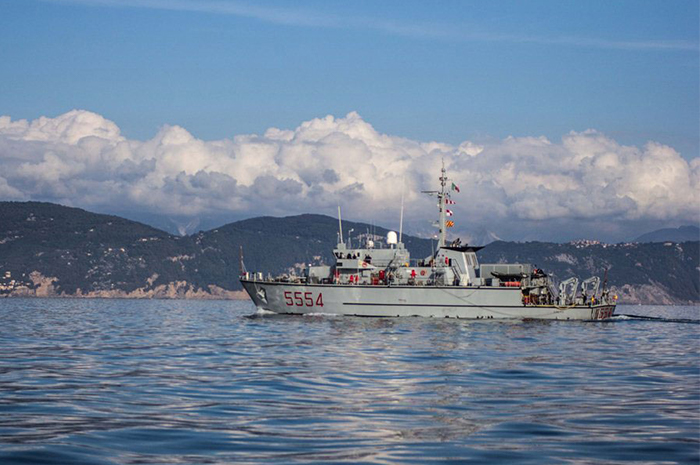Maintaining the edge for Italy’s Gaeta Class minehunters
How Thales technology has recently seen the sixth in a series of eight minehunters upgraded to modern sonar, as part of a refurbishment programme spanning the last decade. Proving how Thales’s tailored and committed approach to naval services is helping maintain sonar mission readiness, as Italy’s Navy eyes its next generation of mine countermeasures capability.
Mines are an ever-increasing problem on the seas. They are no longer simple, low-tech weapons. Advances like anechoic coatings, irregular shapes, and better sensors, mean mines are more challenging to detect and destroy – yet they remain affordable. And mine countermeasures are no longer the ‘quiet man’ of naval operations: fleets are increasingly focused on maintaining their edge, whether by better conventional capabilities or moves towards stand-off solutions.
The minehunters branch of the Italian Navy, operating from its base at La Spezia, in the heart of the Mediterranean, knows this backdrop only too well. Since 2009, it has been systematically refitting its Gaeta Class minehunters. The upgraded vessels form the core of the navy’s current domestic mine countermeasures activities and support to the NATO MCM responsibilities – although Italy is pursuing plans for next-generation ships, under a programme expected to start within a few years.
The systems chosen for the upgrade had to be carefully selected to deliver both a short-term step change in capability and long-term technological endurance and supportability. At the time, Thales’s 2093 variable-depth sonar met the navy’s criteria well: the system’s sound design and sea-proven record has seen it enter service with seven navies across the world – and it continues to be developed into newer wideband variants today. Thales’s decades of experience in sonar systems, deep expertise across the discipline, and flexibly designed support services, were also strong credentials. Through a geographical lens, Thales was fully prepared to contract via and develop a solid working relationship with Italian shipbuilder Intermarine, which would be eased by familiarity with multicultural teams as a result of Thales’s global reach, as well as having extensive experience of seamless working with native contractors, which maximises contract effectiveness and transfer of expertise. Ultimately this made Thales a reliable, long-term choice for the programme.
It’s an assessment borne out in practice in a partnership between the Italian Navy and Thales that has now operated for more than ten years. In that time, Thales 2093 Sonar has been installed on six Gaeta Class minehunters, with Italy’s Leonardo fitting and testing all six systems at La Spezia, via a subcontract through Thales. The sixth ship of eight is currently undergoing Sea Acceptance Testing , before completion of the two final ships in the class, which is expected in the next two years and will see the refurbishment programme largely delivered.
As the programme draws to its end, the Italian Navy is increasingly focusing on maintaining the availability of its systems – with Italy looking to the horizon and a new generation of ships. Thales plays a strong role here too, with Thales Waterfront Engineers based at La Spezia with the aim to keep Gaeta minehunters’ sonar systems mission ready at all times, under an ongoing services contract. Thales has provided continuity and built deep programme knowledge over the years by dedicating expert individuals to meeting the navy’s needs in this way.


